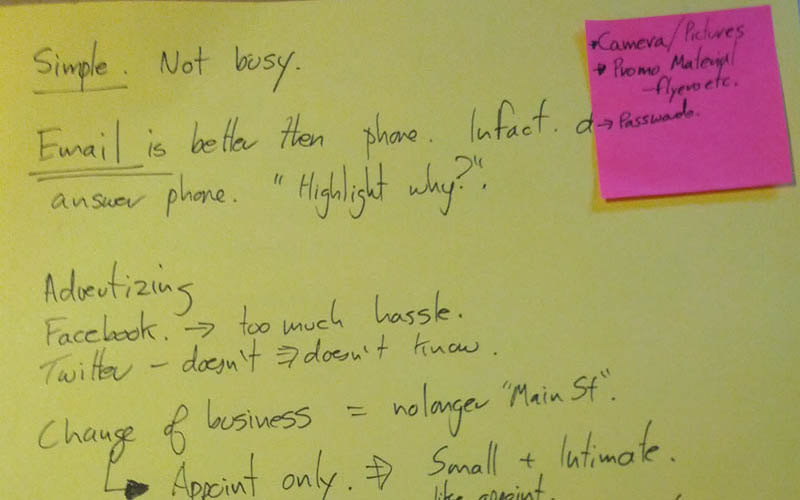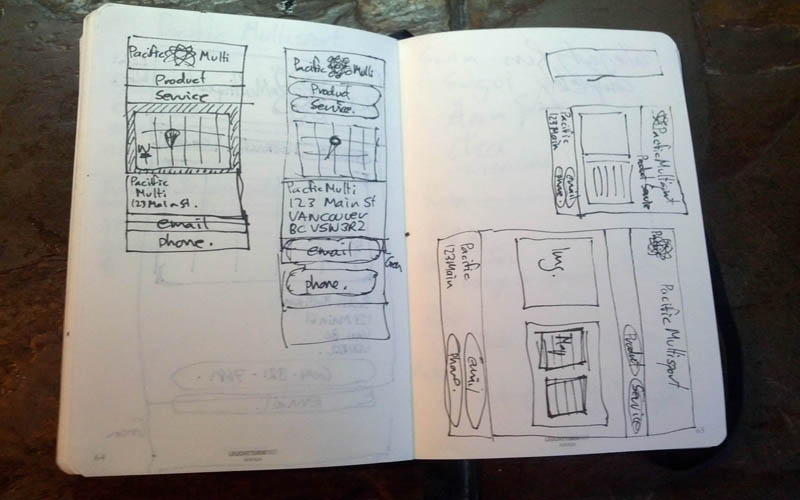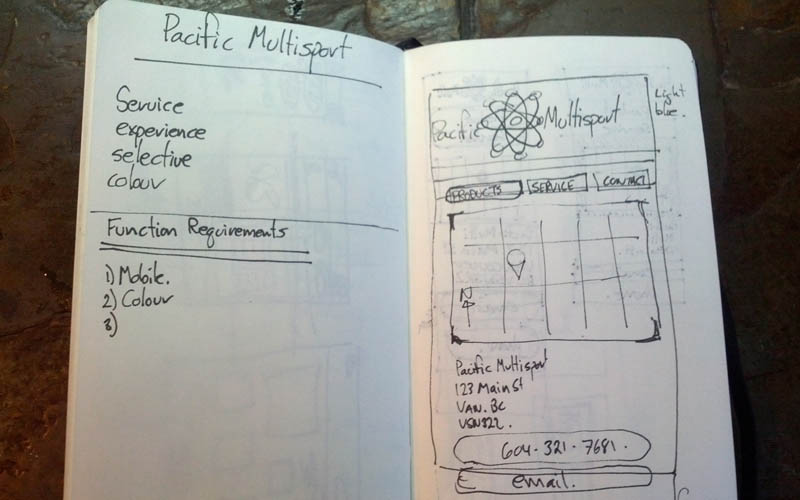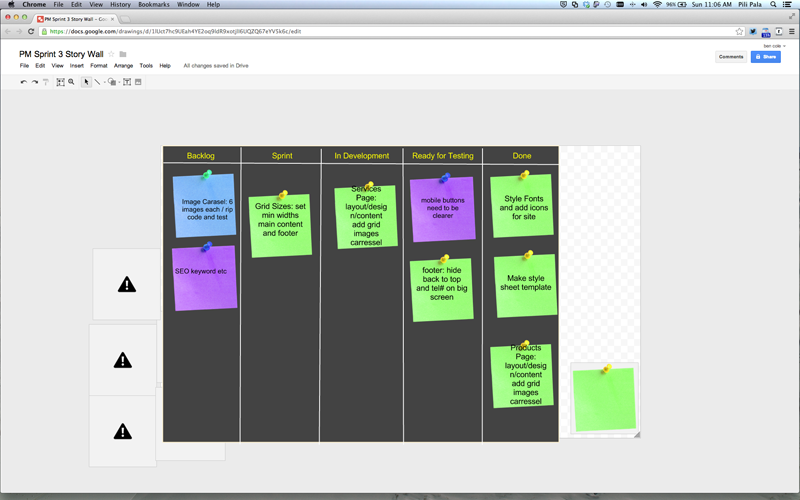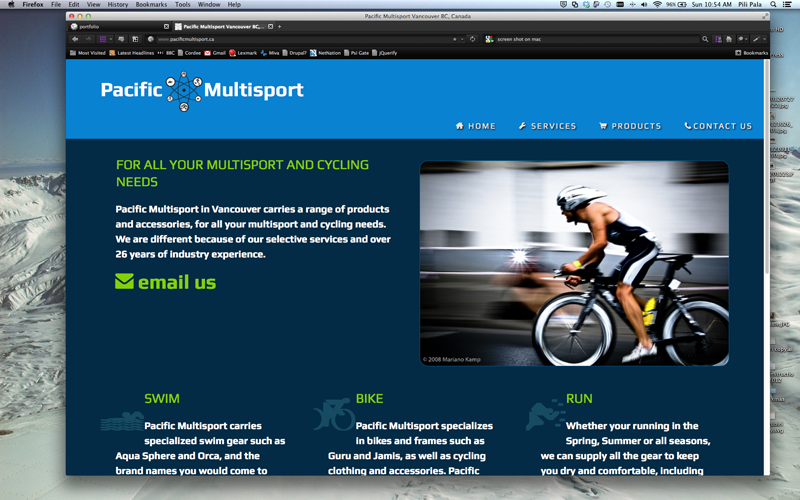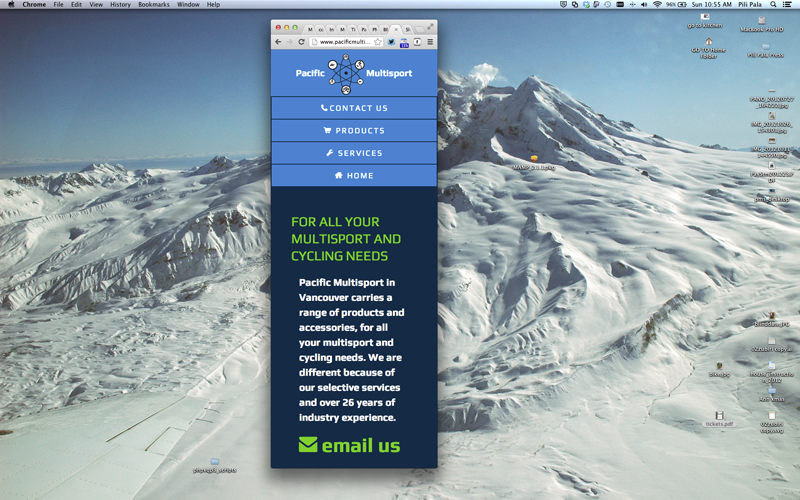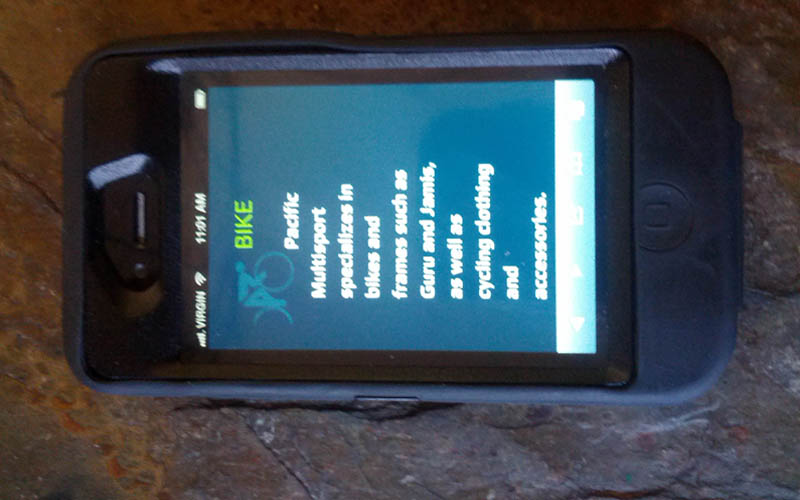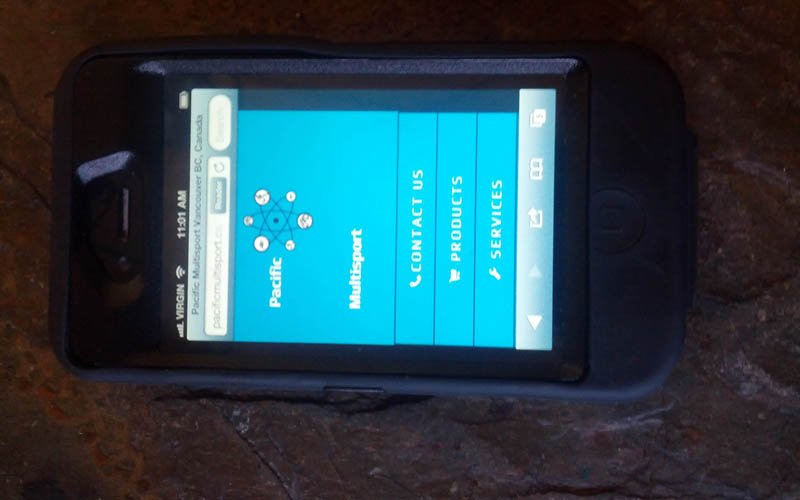Portfolio
With the web it is not always what you say that it important but how you say it and show it. I enjoy using my expertise in web design best practices to make the most out of the opportunity to connect directly with the user regardless of what platform they view a site on.
Here are some of the projects I have worked on with an quick outline of how I work on conversion rate optimization.
If you like what you see please get in touch
- Pili Pala Press: mobile first HTML5 guide to the Camino de Santiago, hand coded with bootstraps and font awesome autumn 2013.
- SX3: Built from scratch in php, html5 and css3 responsive site design.
- Fine Edge: not my initial build but I have been doing the updates and making changes when needed.
- Pacific Multisport: a responsive design with 2013 "in" colours and absolute web fonts.
- 70by70: a wordpress blog about the adventures of a 70th birthday.
- MEC: for two years I was busy working full time at MEC doing A/B testing and content strategy.
- WiderFunnel: I worked for 5 months at the conversion rate agency WiderFunnel. Launching over 75 A/B tests.
- Blog: for ages I have been working with Universal Analytics, and Google Tag Manager. This is where I occasionally try and wrap my head around it and share the knowledge as googles documentation sucks.
Here is an example of how I work
A/B testing in 10 steps
1) Deep Dive into the Analytics
The first phase of any Conversion Rate Optimization project involves a deep dive into the analytics of the digital property.
Some of the things I like to look for first in no particular order:
- Pages with high value and high exit rate: This will often give you a good idea of where to start.
- Traffic sources: What effect does PPC or organic traffic have on conversion goals?
- Device: Are there different patterns or blockages?
- Geolocation: Does location make any impact? Why are people ordering at 2am on Sundays?
- Time of Day/Week: What influence does time have? Weekend traffic to weekday traffic.
- Custom Segments: A great idea is to look at reverse goal paths or segments.
2) Divide the digital property into areas of interest for testing (Do this for mobile, tablet and desktop).
This helps get the testing organized and prioritized.
- Store Pages
- Product Detail Pages
- Home Page
- Site-wide (Header/Footer/Navigation)
- Check Out Funnel
- Category Listing Pages
- Campaign Landing Pages
- Goal Pages - email sign up or registration and any of their funnels
3) Ponder these areas using common pinch points.
- Is the user confused?
- Why should the user stay on this page?
- Does this page give the user the heebee-jeebies?
- What are the next steps?
- Is the page simplicity to use?
- Is there purpose to users tasks?
- UX experience
- UI experience
- Functionality
4) Rank these by rating the easiest pages to test on that will produce the highest return?
I like to use a spreed sheet for this.
5) Build a hypothesis. If we change x, y will happen.
Look to build experiment with psychological triggers and marketing tactics. Depending on the context of the test not everything will work but you might gain useful insights for the next round of testing.
6) Construct an experiment to test your theory.
This is the fun brainstorming part.
7) Design, Develop and QA.
Make a checklist and just like santa check it twice or better yet a thousand times.
8) Run the test.
Don't peek and make sure you leave it long enough to run. Watch out for traffic pattern changes and phantom winners.
9) Is there a statistically valid winner?
If yes do you know why it won? Can you see anything in the data? Use a custom dimension in Google Analytics to show the user paths through the variations.
If no what insights did you gain? Why did what you expected to happen not happen? How can you use that knowledge?
10) Iterate
Don't give up. Often the best profits come after 6 or 16 rounds of testing.
